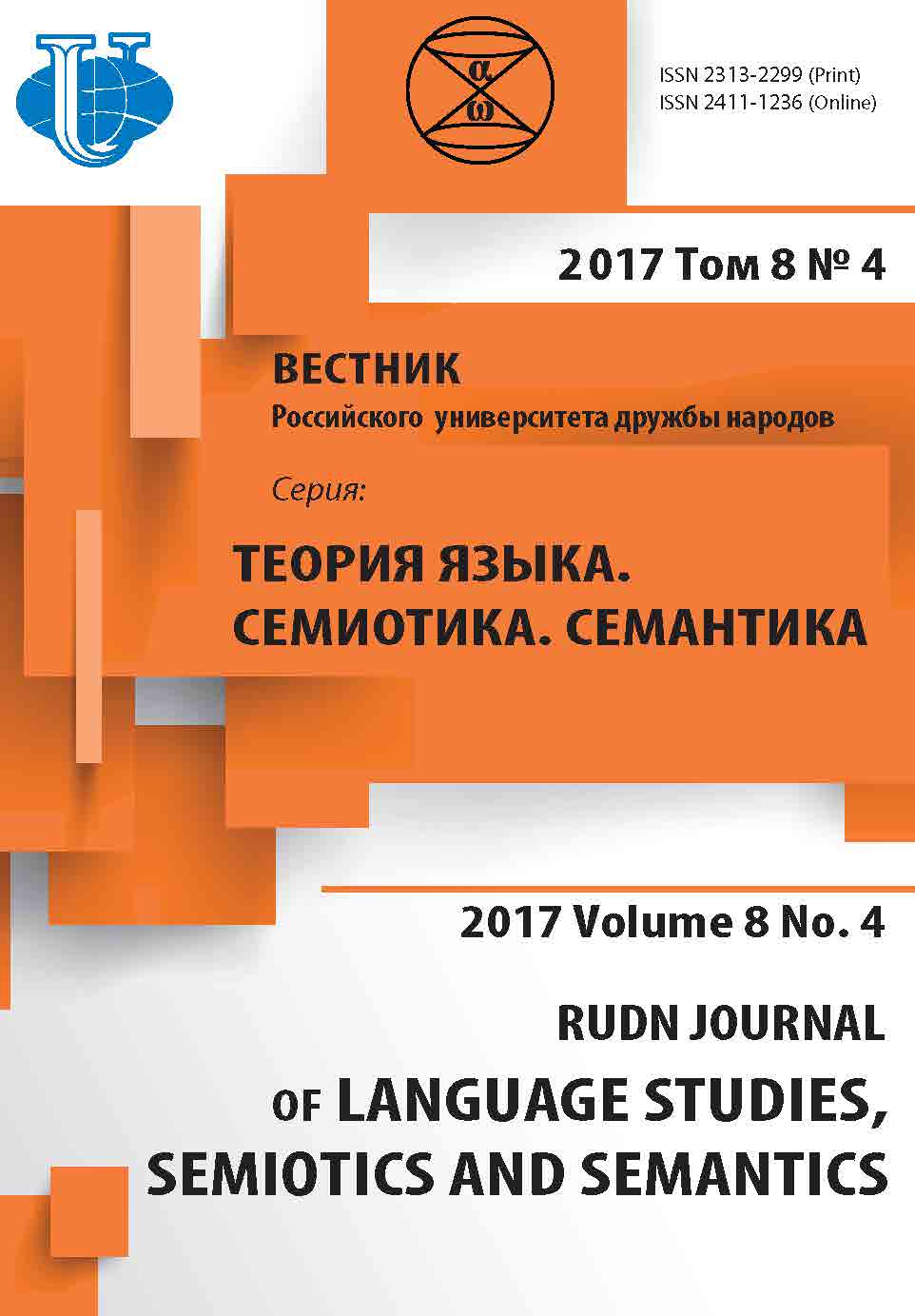UNITE ET VARIATION DANS LA LANGUE BASQUE
- Authors: Videgain C.1
-
Affiliations:
- IKER, Université de Pau et des Pays de l’Adour Euskaltzaindia, Académie de la langue basque, Bayonne
- Issue: Vol 8, No 4 (2017)
- Pages: 1058-1073
- Section: ARTICLES
- URL: https://journals.rudn.ru/semiotics-semantics/article/view/17987
- DOI: https://doi.org/10.22363/2313-2299-2017-8-4-1058-1073
- ID: 17987
Cite item
Full Text
Abstract
This article represents the results of the work over the Basque Atlas carried out under the auspices of the Basque Language Academy (Bilbao / Bayonne). The text contains a detailed description of the material collecting method, the goals and objectives of this work. The article shows that the need for this kind of dictionary is currents but for a number of reasons, that are analyzed in the presentation, this project could not be realized until 1980-s. The work on the atlas are lasting up to the present moment. The atlas reflects language variability at different levels of its structure (lexical, phonetic / phonological, mor-phological and syntactic). The article analyzes variants of the Basque language, depicts the processes of creating a single language standard, explains the reasons for choosing a certain idiom which serves the basis to the standard. The author shows that, in spite of very special provisions of the Basque language as isolate type of language, from the point of view of genetic typologies, it has something in common as for the lexical forms motivation with its neighboring languages.
About the authors
Charles Videgain
IKER, Université de Pau et des Pays de l’Adour Euskaltzaindia, Académie de la langue basque, Bayonne
Email: charles.videgain@univ-pau.fr
Videgain Charles, Doctor of Philology, Honorary Professor of the University of Po and the Ladura Country, Research Fellow at the IKER Laboratory of the National Center for Scientific Research, Vice President of the Basque Language Academy; scientific interests: Basque language, dialectology, ethnolinguistics, geolinguistics Chateau Neuf, 64100, Bayonne, France
References
- Allières, Jacques (2000). Manuel pratique de basque. Picard.
- Aurrekoetxea, Gotzon. (1986). «Euskal Herriko Hizkuntzaren Atlasaren (EHHA): inkesta metodologia eta ezezko datuak». Euskera, XXXI, 413424.
- Aurrekoetxea, Gotzon & Videgain, Xarles, 2016: «Euskararen bariazio geo-morfologiko aren azterketa» , à paraî tre.
- Bec, Pierre (1962). «Cu, cuca, cuçon: désignations génériques de la «petite bête» en gascon et dans les langues romanes». Revue de linguistique romande, n° 101-102, 34-50.
- Berthoz, Alain (2009). La simplexité, Paris, Od. Jacob.
- Bottineau, Didier (2010). «Personne de langage et personne de langue en basque». Epilogos , 1, Les re présentations linguistiques de la personne.
- Dalbéra J.Ph. (1997). «Dimension diatopique, ressort motivationnel et étymologie. A propos des dén ominations romanes de l’orvet», Quaderni di Semantica, XVIII, pp.195-214.
- Dalbéra J.Ph. 2001: «Synthèse romane de l’orvet». Atlas Linguistique Roman, II, pp. 377-404 + 2 cartes.
- Euskaltzaindia (Aurrekoetxea, Gotzon & Videgain, Xarles, dir. tech.), 2008-2015: Euskal hizkeren atlas linguistikoa, EHHA, Bilbao. Les 7 volumes parus sont consultables sur http://www.euskaltzaindia.eus.
- Propp, Vladimir, 1965 [1928]: Morphologie du conte, suivi de Les transformations des co ntes merveilleux et de E. Mélétinski, L’étude structurale et typologique du conte , Seuil.
- Ravier, Xavier, 1965: «Le traitement des données négatives dans l’Atlas linguistique et ethnographique de la Gascogne». Revue de linguistique romane, n° 115-116, 262-274.
- Van Gennep, Arnold, 1934: «Contribution à la méth odologie du folklore», Lares, Anno V, marzo XII, 20-34.
Supplementary files












